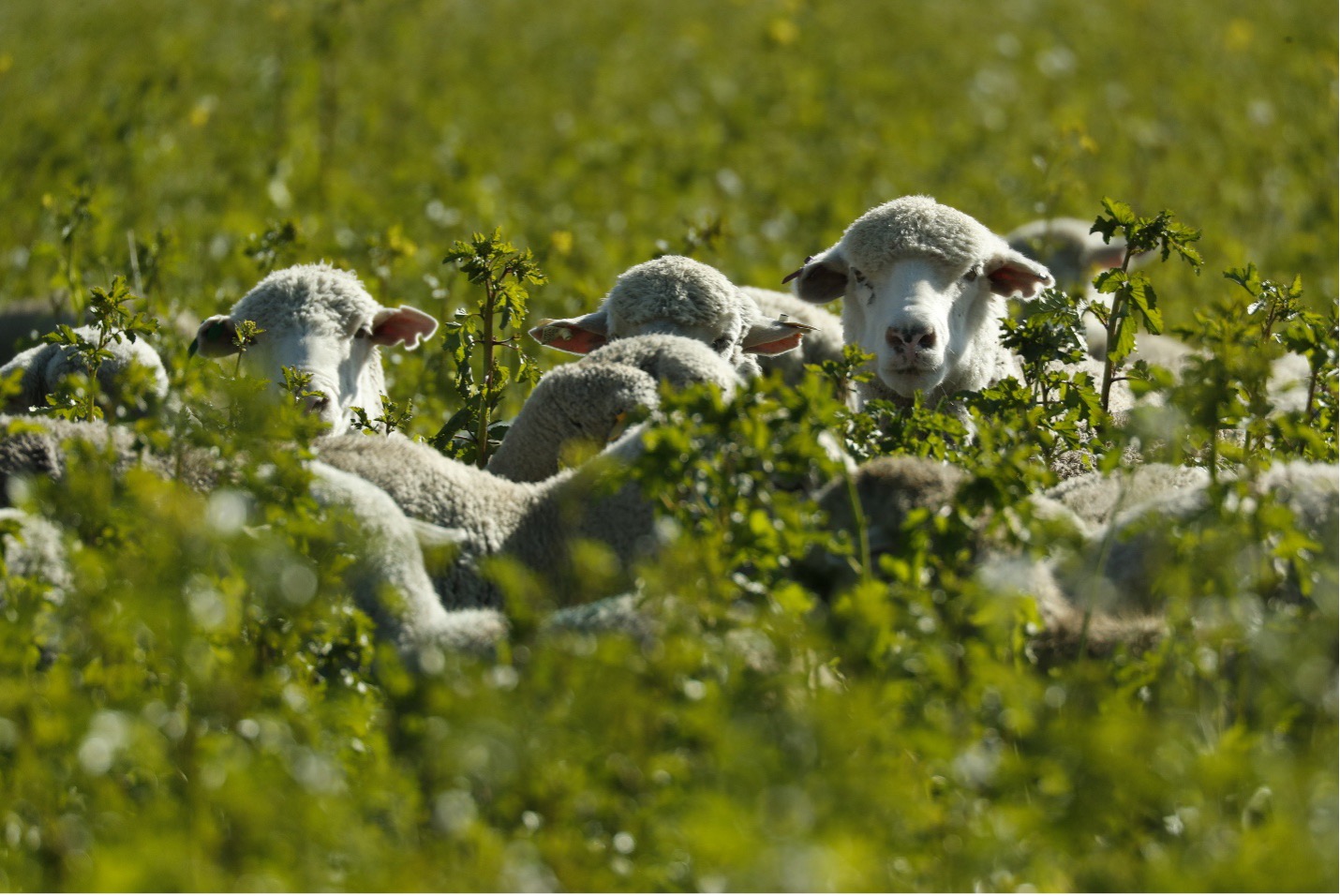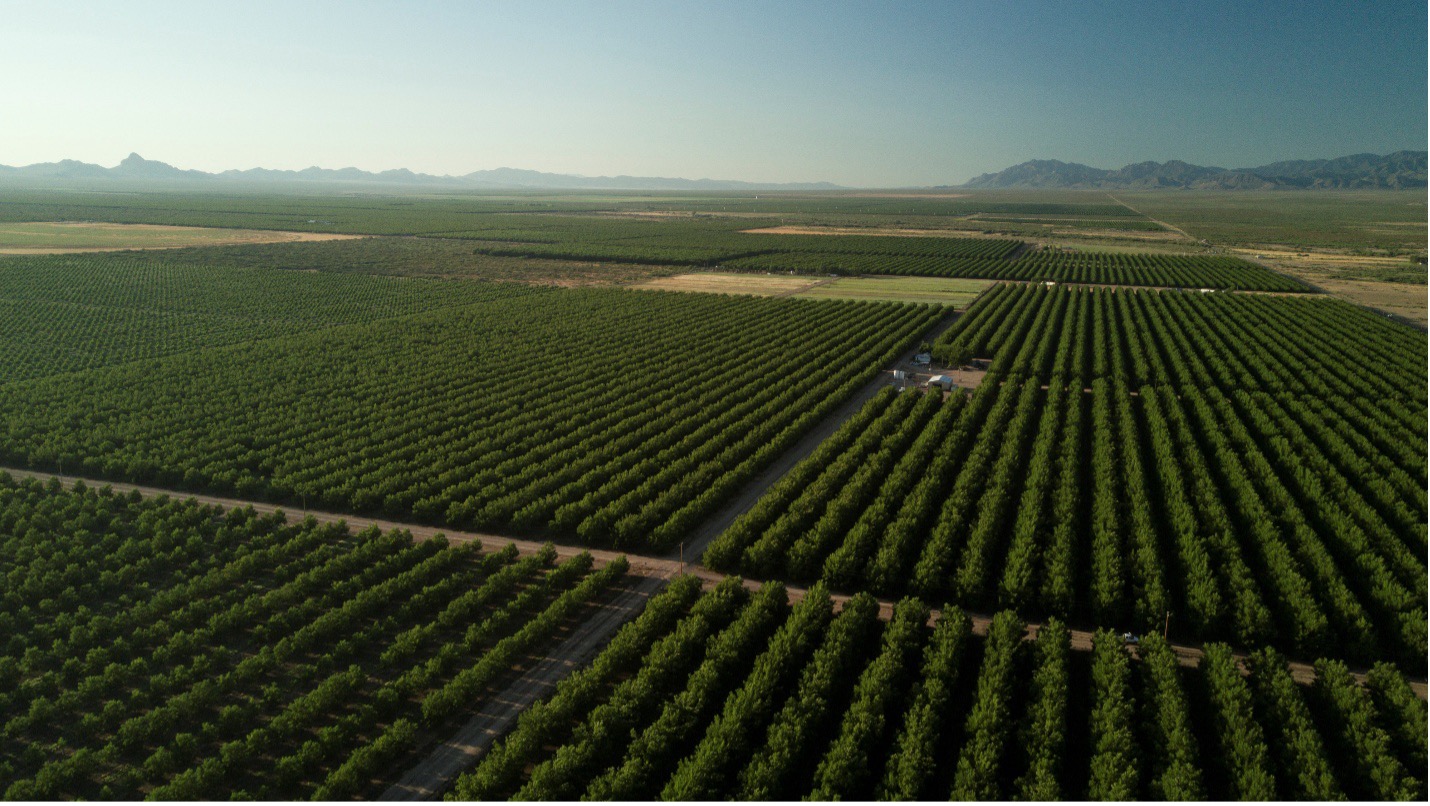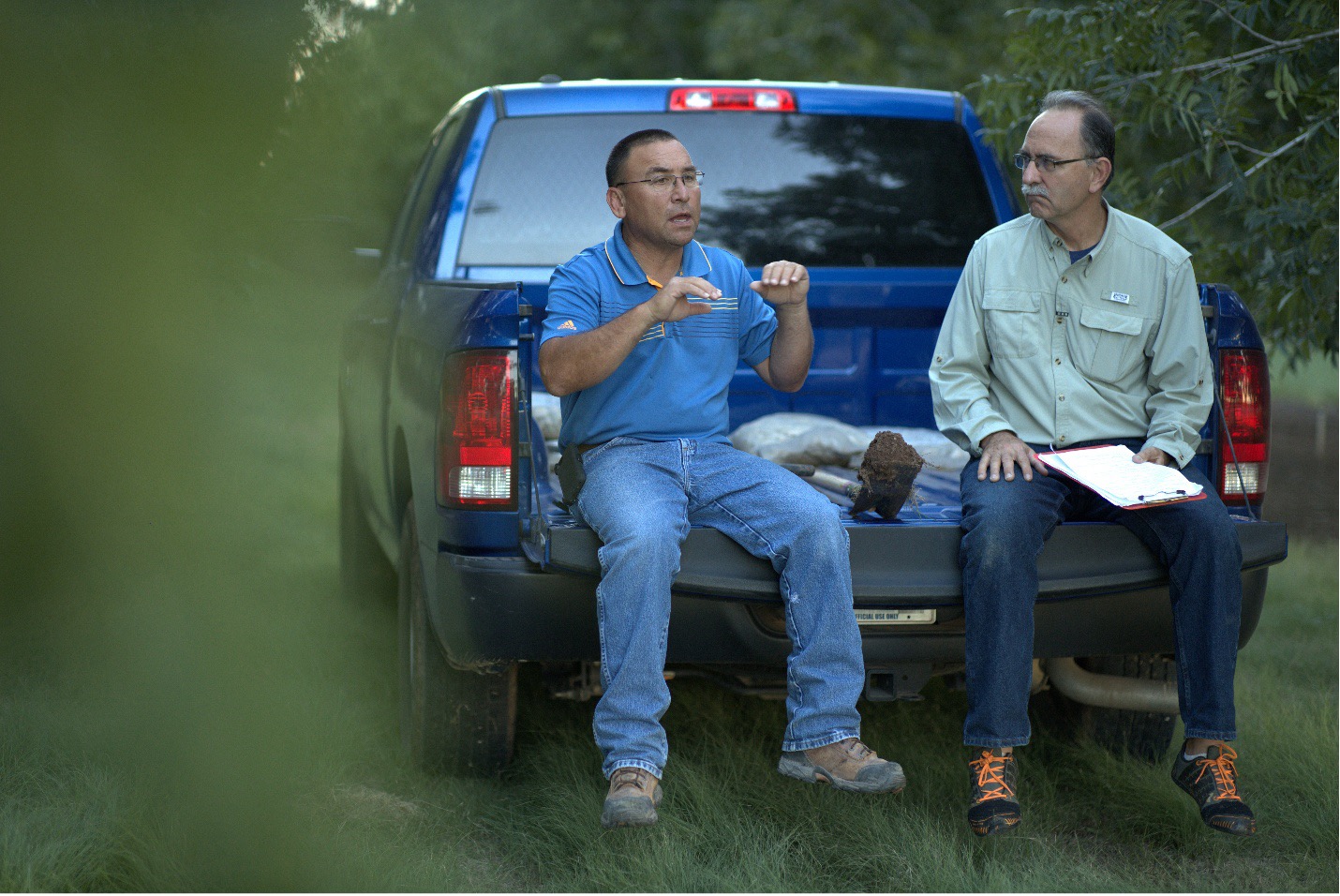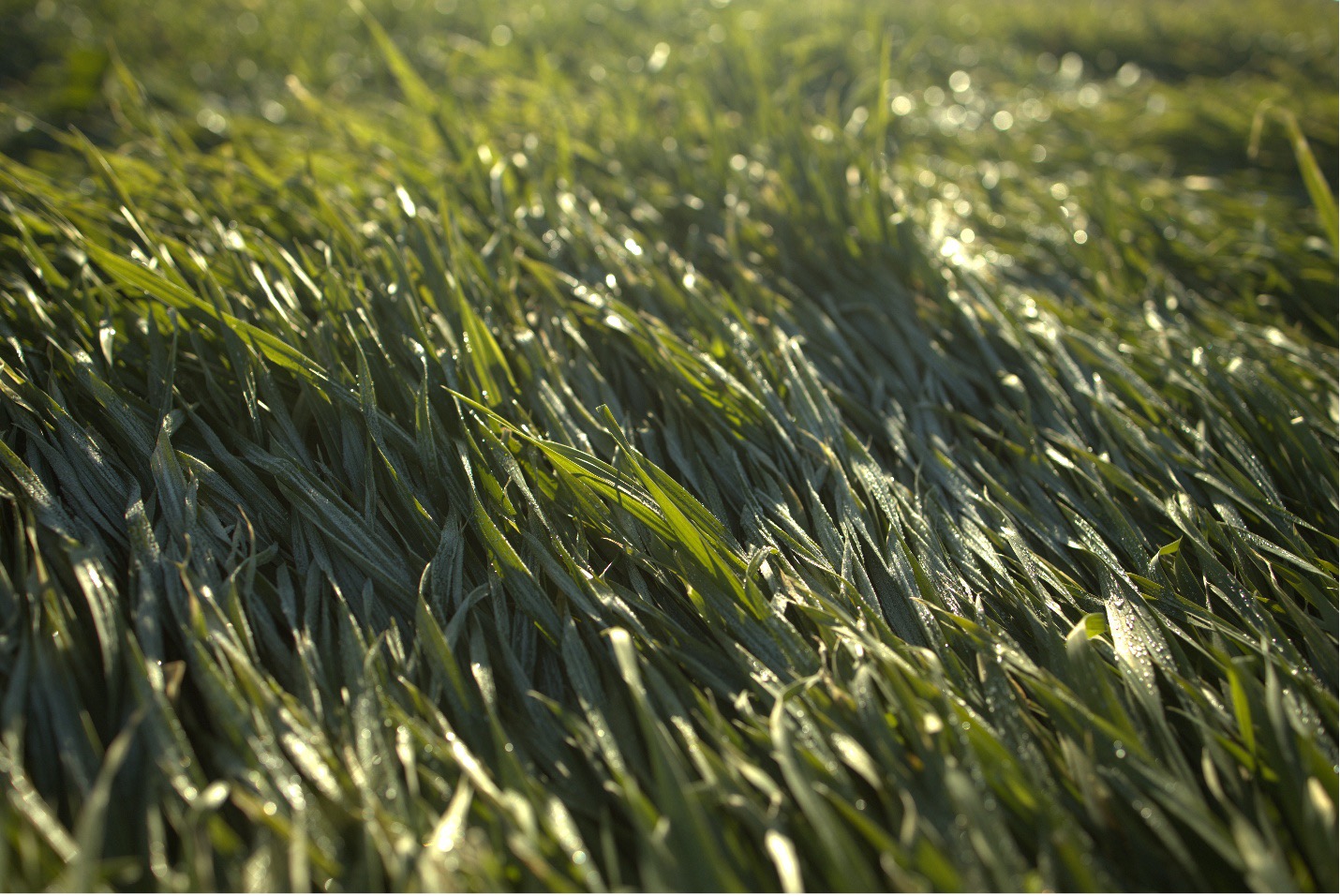
In a recent interview with Dr. Gabe Kenne, Lance Samuel spoke about his family’s farm, ‘Bushels & Bags’ near Ridgeway, South Carolina. Co-founded with his wife, Kim, their journey began with a simple vegetable plot, and has now expanded to supply locals, families, and restaurants with the most honest produce possible.
Initially the two former personal trainers only intended to start a homestead.
“We had moved out there just with the idea of getting away and having our own peace of mind and quiet away from the suburbs. We started with just one plot; I’d say a 45 by 5-foot area of vegetables for ourselves. We ended up having some extras, Kim found out about microgreens, so we started on that as well. We found ourselves with some extra produce and microgreens, and it kind of went hand-in-hand with the fact that we were personal trainers at the time and looking to bridge the gap between health and fitness, as far as the nutrition side,” says Lance. “So we went to the local farmers market with some of our stuff and it really kind of took off from there. We weren’t expecting as huge of a demand as there was for organically grown, pesticide-free chemical-free vegetables, which is what we stuck to.”
This is what differentiates Bushels & Bags from many farms– Lance and Kim are entirely chemical-free on all fronts. Their focus is all-natural agricultural methods: exclusion netting, hedge rows, no-till, organic compost. The Samuel farm is “Certified Naturally Grown” (CNG), which is similar to an organic certification, but relies on a more grassroots, peer-reviewed process. This method not only supports small-scale farmers but also reduces certification costs. Lance values the collaborative nature of CNG, which fosters idea exchange and mutual support among farmers.
“Rather than having someone come and inspect you from the larger conglomerates, a local certified farmer from just one state over comes to your farm, inspects and certifies you. If they’re not available you can have a professional in your field come in and inspect, and the standards are that you don’t have the same person inspecting you each year so you can have different eyes on your operation and ensure that you’re holding to the CNG standards,” says Lance. “But what it really means is that we don’t use any GMO products, our seeds have to be organic, we have to try to source organic first, if we can’t find an organic version of the seed then maybe we could possibly look for another option. No synthetic chemicals, pesticides, fertilizers– which, again, we don’t even use certified organic pesticide, we try to stay away from that altogether. We also like the peer review element, having other farmers and professionals in the field coming out to the operation.”
Bushels & Bags now operates on approximately 1.5 acres. As of this summer, they’re growing a variety of traditional warm-season crops, including cucumbers, zucchini, pattypan squash, basil, butternut squash, heirloom tomatoes, and a couple different varieties of peppers, cherry and grape tomatoes. They’re always tending to microgreens in the greenhouse. Lance has been experimenting with cover crops, comparing crimping and mowing techniques, and he found crimping—rolling cover crops flat before planting—to be superior.

“We had a stand of rye, vetch, clover and there may have been some field peas in that mix, and that was seeded back in early spring or the end of the winter, and it was a relatively small area. So, all I did was take a little rolling bed roller, traditionally used to flatten out a bed after you add compost onto it– you can put heavy blocks on there, like cinder blocks, so I just put those blocks on there, rolled it down, that really worked well,” says Lance. “I tried to do it right at the stage when rye was about to go to seed, because from what I’ve heard that’s the right moment to crimp. But I rolled it a couple times, laid it flat, and then pulled a tarp over it. That tarp sat on it for maybe four weeks, pulled the tarp back and it kind of looked like I had just laid down straw right there on the beds, and all I did was pull that apart, make a little hole in the soil, put the pattypan down in there, and the pattypan just took off. It’s the most explosive harvest of pattypan squash we’ve ever had. And it wasn’t just the yield, but the plants were also extremely healthy, super dark green, the leaves very vibrant.”

A big difference Lance noticed between the crimped and mowed stands was the weed pressure– when he mowed and tarped his covers, they were more fraught with weeds and pests.
Of the regenerative tactics implemented on the Samuel farm, a standout is the use of hedgerows composed of native plants and flowering species between crop plots. Lance noticed the hedgerows attracted beneficial insects and birds that help with pest control, reducing the need for chemical intervention.
“The hedgerows have been huge for pest control. I think that's one of the main reasons we don't have to spray, those rows are full of all the competition for the pests that would traditionally mow down a crop. That and the birds– the birds are amazing to watch coming to and from the hedgerows. You can watch them fly down to the hedgerow, pick bugs off your crop and fly to the next row– it's really given them a great habitat. To watch what this place used to be, where it was just barren and we could barely see any wildlife out here, to now where we have a wild variety of birds…” explained Lance. “I’m always trying to learn what new kind of bird I'm seeing out here. It makes farming something I can feel really good about, instead of just looking at a huge open field of a crop that I'm trying to pump some money out of. Obviously, we still have to use exclusion netting for things like flea beetles, whose populations kind of explode overnight and die off later in the season, but now I can actually see benefits across the board because I'm not fighting nature, I’m working alongside what was already put there, that complete system that already works together so well.”
The hedgerows enhanced biodiversity on the property and also manage water runoff by absorbing excess water and preventing soil erosion.

“They're great at slowing and stopping water if its running, because we raised them and they’re about 5 feet wide– we kind of hill them up and plant everything in them, so as the water’s flowing or we get heavy rains, the water runs right to the root zone of all those plants that are in that hedge row. That's what perennial plants are good at, soaking up water out of the landscape and storing it right there down in the soils.”
In the future, Lance is interested in incorporating rainwater catchment systems to further improve water management and reduce reliance on well water. He’s interested in diverting water without the use of modern irrigation, citing how ancient civilizations of the past had been able to capture rainwater in cisterns or trenches to delegate to crop fields. The farm recently experienced a period of drought, which brought Lance’s attention to the importance of having water resources beyond the well.
Initially the farm implemented outsourced compost, purchasing it in large quantities and spreading it on top of the soil every year. It didn’t take long for that practice to become prohibitively expensive, inefficient, and wasteful. They tried just letting the beds go, without compost, and sprinkling mulch. This also didn’t work– weed pressure increased and soil organic matter was no longer being bolstered by compost. So, Lance decided to start generating his own.
“We worked with our local municipality, they have a ton of leaves, especially in the fall, truckloads that they didn't have anywhere to dump. And then we also worked with a local brewery, which are popping up more and more, so spent grain is becoming a big waste product as well. And the cool thing was that this lady ended up being a CSA member which is how I made this connection, and she asked us, ‘Have you ever thought about using spent grain, because I'm just dumping all this into a dumpster every day after we use it.’ I started doing some research on it, and looked into what spent grain really was and realized that this is perfect material for composting, seeing as it's already been fermented and already has all this life in it. So, she was telling me the process they use when they ferment it, how they cook it to this high temperature like 160, and I thought, that sounds like composting already” said Lance. “We had always done composting on a smaller scale prior to that in little pallet bays with just our vegetable waste, so now, with that and the leaves being added in, we were able to just mix the leaves, mix in the spent grain, and mix in our vegetable scraps, and from that create a very fast turnover compost, it's only about a month before it’s cooled down to that stable temperature around 70 degrees and we’re able to use it.”
They can’t produce as large a quantity of compost as what they were purchasing, but the compost generated on their own farm turned out to be much more nutrient-rich and beneficial to the crops.
Says Lance, “I think there's a lot more life in it by far, and it's free. That's a big benefit– it's just a waste product, it requires a little extra labor from us, but it's labor we feel good about because we know we’re being resourceful and making something.” A benefit they’ve noticed on their land since switching from outsourced to in-house compost is reduced weed pressure. Some of the commercial compost they’d brought in had actually been full of weed seeds, bringing an enormous weed presence that they’re still quelling today. Lance encourages farmers to generate their own compost because you can intimately know what you're bringing onto your property– what is growing near it, its temperature fluctuations, its entire composition.
Lance is still always experimenting with adding, subtracting and refining factors of the farm. For example, an experiment to remove wood chips from intercrop pathways resulted in increased erosion and water runoff, and Lance has since reverted back to using wood chips on walking paths and refined the application method, which has improved water management and reduced labor.
The family dynamic plays a crucial role in the farm’s operations, as the Samuel children all contribute to the health and subsistence of the farm. Operating in a remote, rural area, however, has presented its challenges. The farm's location, combined with the prevalence of personal gardens among locals, complicates direct sales. Despite these difficulties, Bushels & Bags has found success through regular attendance at a local farmer’s market, a CSA program, and relationships with local restaurants.

“We’ve kind of settled in with the Kershaw Farmers Market as our primary farmer’s market now, that's a really good one. Gets a really big crowd. The folks there are really appreciative of local produce. We’d actually started advertising the CSA through the market, and the way that works is that it’s an 8-week program that we bill upfront, so you're helping support the farm by paying to support your 8 weeks’ worth of shares up front, it helps us get the seeds, materials and supplies we need to be able to farm for that 8 week period in advance, so that's really been supportive. Then the restaurant thing really started to come in, and that started with a country club down in Camden– the chef came to visit the farmers market and saw our vegetables asked, ‘have you thought about selling these to a chef?’, and we were open to it, so we started with him and then kind of realized that was working out well and started to reach out to other restaurants and what's really started to happen lately, is that now that we’ve developed a relationship with several restaurants, those chefs are passing our name along to other chefs.”
To beginning farmers, Lance emphasizes the value of public resources– books, videos and online courses– and heeds new farmers to first find and shadow existing farmers that are operating under shared value systems.
“If I could go back, I would say the most beneficial thing somebody could do is find that farm that is implementing what you'd like to do, where its already implemented, and go work with them for a while, for a full season at least if you can, so you could really understand what farming is like and the obstacles you'll have to deal with and what is required of you to stay on top of things.”
Looking ahead, Lance aims to further integrate regenerative practices onto the farm as entirely as possible. One of his intended tactics in the future is to further involve both annual and perennial crops on the farm.
“The goal is definitely just to become even more regenerative. Is there a peak that I can reach with regenerative tactics? That's the goal. I'm trying to examine the natural systems that have been created for us and really try to implement that on the farm. I don't think that involves only annual crops– we’re really focused on annuals but I think there's a way to implement both annual and perennial crops, just like you see in a forest system or a meadow, where there are the annuals that come around in their time, but then there's these staple perennials that are there holding the soil together and storing the nutrients or bringing in the nitrogen or whatever it may be– it's a great system in place and I’d like to mirror that in farming as well. So that's my continual goal- to just become even more regenerative, even more reflective of the natural systems.”
For more information about Bushels and Bags, visit their website https://www.bushelsandbagsfarm.com/ or visit them at the Kershaw Farmers Market in Camden, SC on Saturdays.








